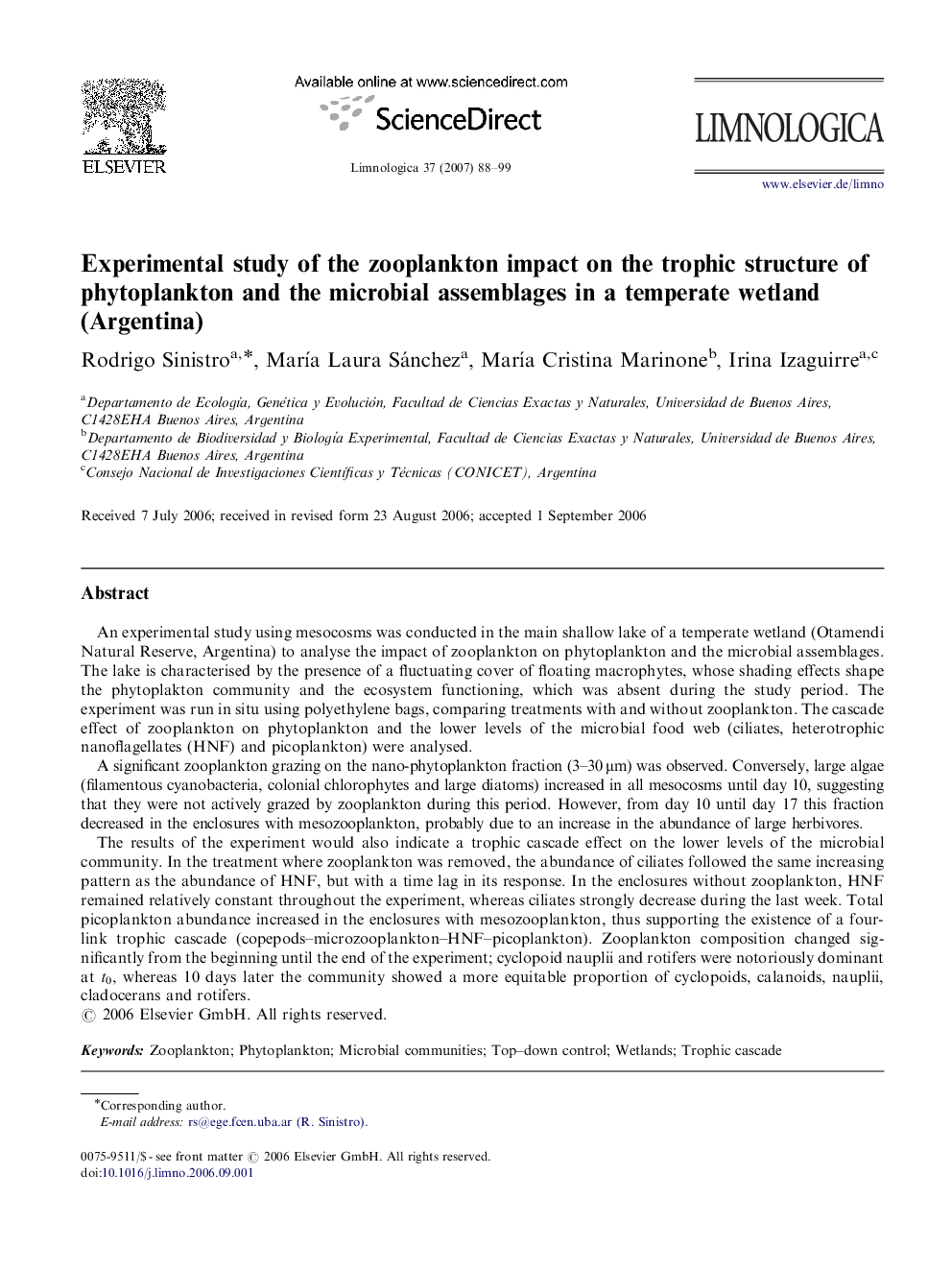| کد مقاله | کد نشریه | سال انتشار | مقاله انگلیسی | نسخه تمام متن |
|---|---|---|---|---|
| 4400729 | 1306994 | 2007 | 12 صفحه PDF | دانلود رایگان |

An experimental study using mesocosms was conducted in the main shallow lake of a temperate wetland (Otamendi Natural Reserve, Argentina) to analyse the impact of zooplankton on phytoplankton and the microbial assemblages. The lake is characterised by the presence of a fluctuating cover of floating macrophytes, whose shading effects shape the phytoplakton community and the ecosystem functioning, which was absent during the study period. The experiment was run in situ using polyethylene bags, comparing treatments with and without zooplankton. The cascade effect of zooplankton on phytoplankton and the lower levels of the microbial food web (ciliates, heterotrophic nanoflagellates (HNF) and picoplankton) were analysed.A significant zooplankton grazing on the nano-phytoplankton fraction (3–30 μm) was observed. Conversely, large algae (filamentous cyanobacteria, colonial chlorophytes and large diatoms) increased in all mesocosms until day 10, suggesting that they were not actively grazed by zooplankton during this period. However, from day 10 until day 17 this fraction decreased in the enclosures with mesozooplankton, probably due to an increase in the abundance of large herbivores.The results of the experiment would also indicate a trophic cascade effect on the lower levels of the microbial community. In the treatment where zooplankton was removed, the abundance of ciliates followed the same increasing pattern as the abundance of HNF, but with a time lag in its response. In the enclosures without zooplankton, HNF remained relatively constant throughout the experiment, whereas ciliates strongly decrease during the last week. Total picoplankton abundance increased in the enclosures with mesozooplankton, thus supporting the existence of a four-link trophic cascade (copepods–microzooplankton–HNF–picoplankton). Zooplankton composition changed significantly from the beginning until the end of the experiment; cyclopoid nauplii and rotifers were notoriously dominant at t0, whereas 10 days later the community showed a more equitable proportion of cyclopoids, calanoids, nauplii, cladocerans and rotifers.
Journal: Limnologica - Ecology and Management of Inland Waters - Volume 37, Issue 1, 28 February 2007, Pages 88–99